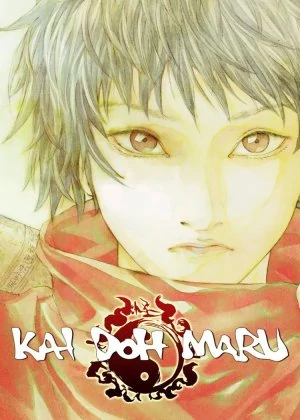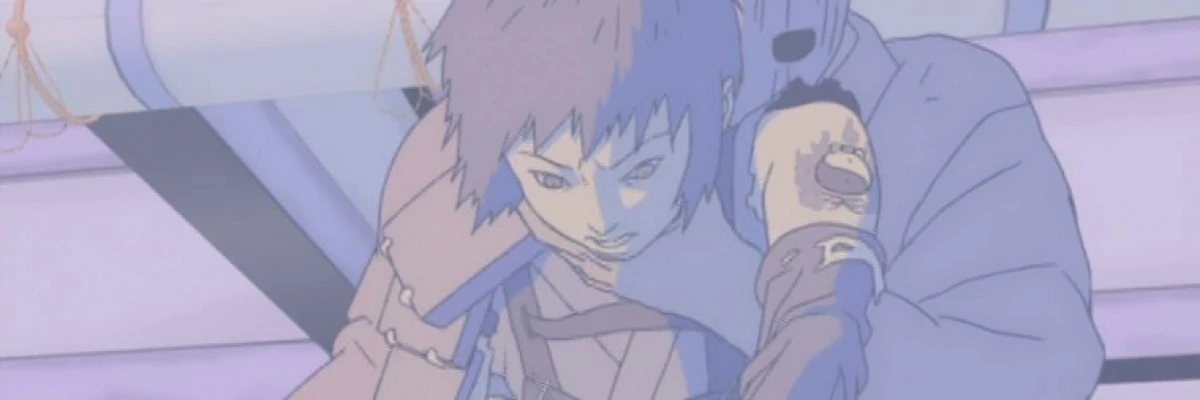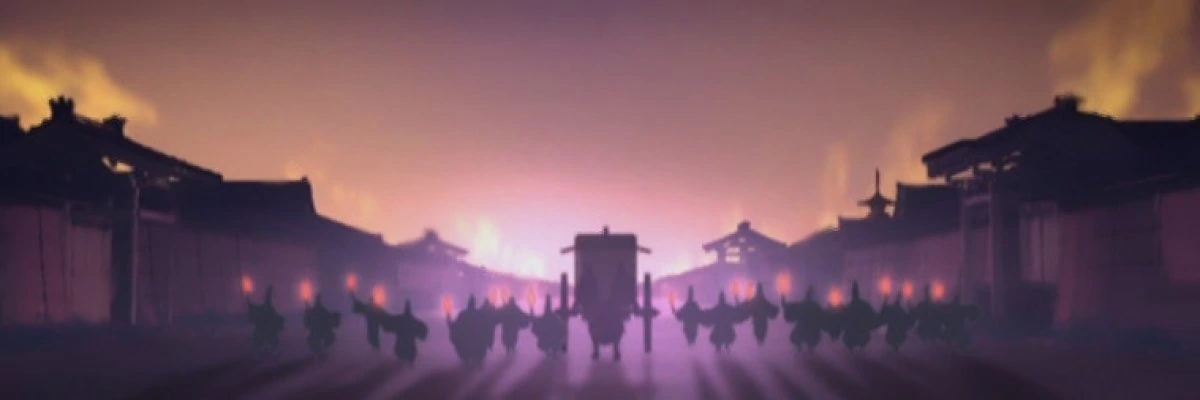Kai Doh Maru
Movie details

In the category of long forgotten anime experiments, Kanji Wakabayashi's Kai Doh Maru is a stand-out entry. It's a rather short film produced to explore the benefits and possibilities of CG animation, though fated to become one of the more lackluster Production I.G releases of that era. I loved the bold risks it took, both visually and story-wise, no surprise then that I've counted it among my favorites ever since I first watched it. It's been ages since I last saw it though and since then the anime world has fully embraced CG, so I was curious to see if the film would still hold up after all this time.

While the West was embracing CG animation quite early on, Japan was less eager to switch away from hand-drawn animation. There is Studio 4°C's groundbreaking work and some feature films (like Akira or Ghost in the Shell) that used it for very specific special effects, but overall the use of CG was frowned upon. It was just a matter of time before Japanese studios would come to see the benefits of computer-aided animation though, which is why films like Kai Doh Maru began to pop up around the turn of the millennium.
Together with Blood: The Last Vampire, Kai Doh Maru was Production I.G's little experiment to see how they could leverage the computer in their favor. Blood is the more traditional anime of the two, whereas Kai Doh Maru adopted a more classical art style, harking back to traditional Japanese paintings. Kai Doh Maru ended up the lesser known of both films, which is not too surprising if you consider it also feels the most like a tech demo. 45 minutes is hardly enough to do justice to the setting, characters and story, something that's much less of a problem when you're doing a simpler vampire hunter story.
Kai Doh Maru shuffles around some classic Japanese folklore, mixes it up with a little gender-swapping (Kintaro is now a tomboyish girl) and tops it off with a few historical figures. These characters battle it out in an era of revolts, disease and political unrest. That's a lot to handle in just 45 minutes and it's clear that Wakabayashi is struggling to cram in as much as possible. He seems to rely on familiarity with the subject to cuts some corners here and there, which is sure to be a struggle for anyone not familiar with the various sources. A very tight and polished story this is not, then again it's not that complex either.

Because this is basically a glorified tech experiment, it's the visual prowess that matters most here. The art style too is pretty polarizing though, sporting an extremely dim and matte color palette, while mixing together different drawing styles. The characters have a strong line-based, hand-drawn look, while the backgrounds are extremely geometrical and clean. They blend together very well because of the color story, to the point where certain things can something look a little too perfect. Apart from some iffy-looking trees, I think Wakabayashi pulled off something special here, a completely unique style that managed to win me over once again. Add to that an intro executed in a more rugged, from-the-wrist drawing style and some occasional splashes of color for contrast, and you have a definite winner. The only thing I will say is that it could do with a nice, Full HD upgrade.
The soundtrack isn't the most original, but it is quite effective. It's a good example of a soundtrack that doesn't take too many chances and remains in the background for most of the time, but still manages to add to the atmosphere. You may not notice it explicitly while watching the film, but if you go back and focus on the music specifically, then it becomes clear the score is an added value. The dubbing is also on point, though as always I would advise people to go with the Japanese dub. I admit that I didn't even bother to check the US dub for this one, but since this film is set in ancient Japan, I can't even begin to imagine how an American accent would be acceptable.

If you want to get the most out of the plot, multiple viewings are probably advised, unless you have a very solid background in Japanese history and folklore. There's quite a big cast of characters and introductions are minimal. Meanwhile, the plot moves at a breakneck speed and the film makes some pretty big jumps. The primary reason that I can't really keep track of the story though is that I keep getting caught in the film's beautiful, stylish atmosphere. After a while I just give up trying to follow the intricacies of the plot and simply enjoy the beauty that unravels on screen. I consider that a definite perk, but it's not something everyone will appreciate.
This is a film for people who have a soft spot for animation. Kai Doh Maru will not deliver a tight story or well-developed characters, but if you appreciate a unique art style, moody atmosphere and technical experimentation there's plenty to look forward to. It's a film for a pretty niche audience and chances are that it won't be to your liking, but because it is so short and different I'd still recommend checking it out. The film is over before you know it and at least you'll have witnessed something special. I just hope they'll get around to making a proper Blu-Ray release for this one, it really deserves an upgrade.